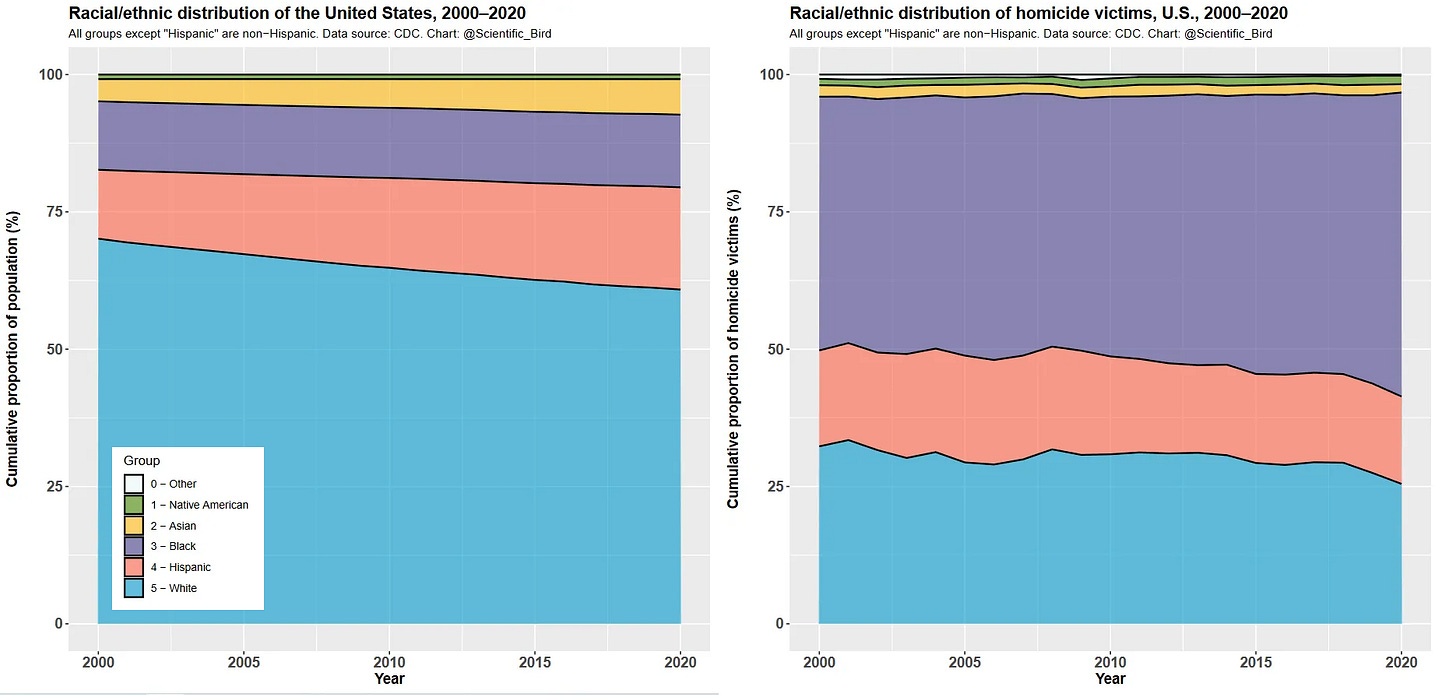Demographics and American Homicides
Can racial/ethnic demographics explain the high American homicide rate?
The American homicide rate stands out when compared to other developed countries. As I noted in my recent primer on crime in the United States, of countries ranked within the top 25 on the human development index, no other country’s homicide rate comes even close to the American one. But there was an obvious follow-up question: why?
Many purported explanations have been forwarded. The political left will typically point to the unusual number of guns in circulation in the country, or perhaps the high level of economic inequality. These hypotheses are certainly worthy of analysis in their own right.
The focus of this article is on another potential contributor: the demographic differences between America and the rest of the developed world — an explanation arising from the basic observation that homicide rates vary substantially by race/ethnicity within the United States.
So here I will answer the following question: to what extent is the disparity in homicide rates between the United States and comparably developed Western countries due to differences in racial/ethnic composition?
To answer this question as accurately as possible, I’ll need to walk through three steps.
1 — Demographics and homicide in the United States
The idea that racial/ethnic demographics could help explain the high American homicide rate may initially seem perplexing or implausible. However, there is good reason to suspect it plays an important role.
One useful way to illustrate why is to juxtapose the racial/ethnic distribution of the general population with that of homicide victims. That is shown below.

From just a glance it is clear that the two distributions differ markedly. For instance, non-Hispanic whites are a much smaller share of homicide victims than their population share, the same is true for Asians, whereas black Americans show the opposite pattern.
To make it even clearer, we can look at homicide victimization per-capita rates (2019-2021), which is illustrated below.
Homicide victimization rates differ manyfold between groups and in some cases by an order of magnitude. These differences correspond to large practically relevant differences in risk. In terms of homicide victimization risk, it is as if Asian Americans live in a safe European country whereas black Americans live in one of the most dangerous countries in the world.
Ultimately our real interest lies in offending rates, not victimization rates. However, as homicides tend to be intraracial, victimization rates serve as solid proxies for offending rates. When comparing full nationwide estimates there is no reason to even distinguish between the two, but for subsets of the population the distinction can be relevant. Interracial crime within nations can result in some amount of bleed over between groups, causing victimization and offending rates to diverge. In the U.S., there are more nonwhite-on-white homicides than vice versa, thus the white offending rate is somewhat lower than their victimization rate. In a previous blog post, I developed a method for estimating offending rates based on a combination of victimization statistics and interracial homicide tabulations. Therein I estimated that the white homicide offending rate is probably 15-20% lower than their victimization rate.
In the following sections, I will investigate to what extent these demographic differences can account for America’s high homicide rate.
Keep reading with a 7-day free trial
Subscribe to Patterns in Humanity to keep reading this post and get 7 days of free access to the full post archives.


